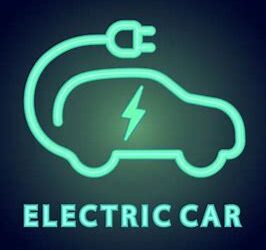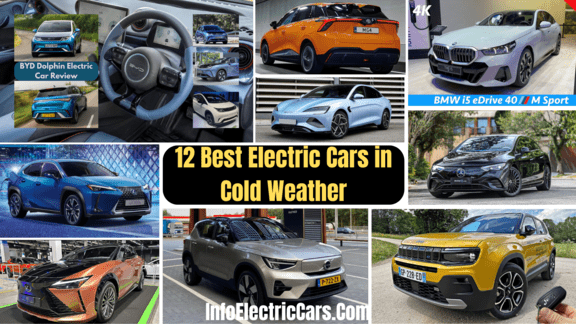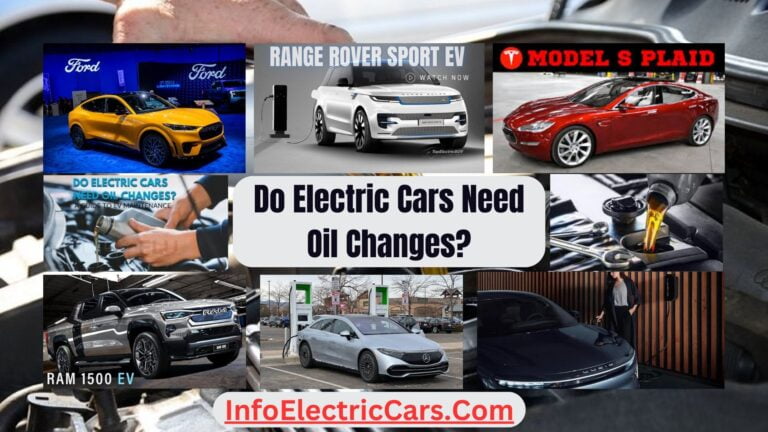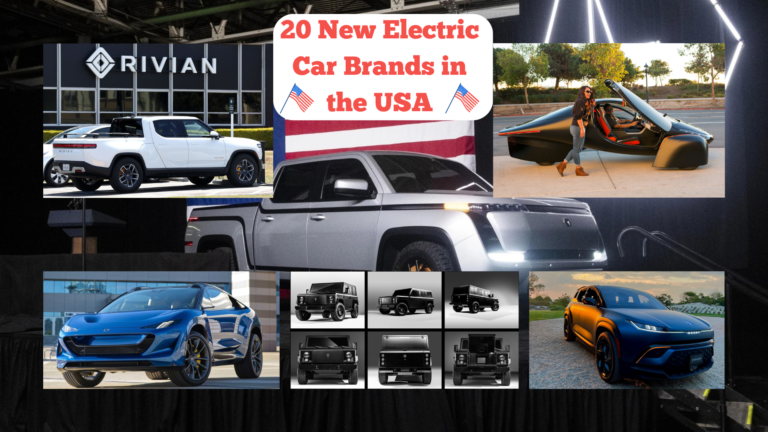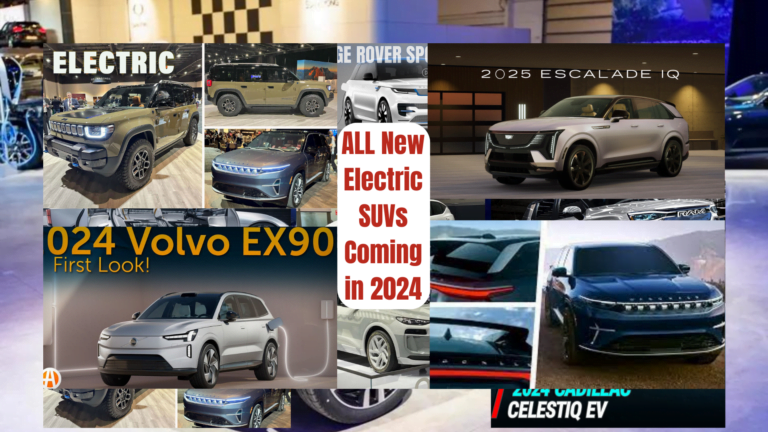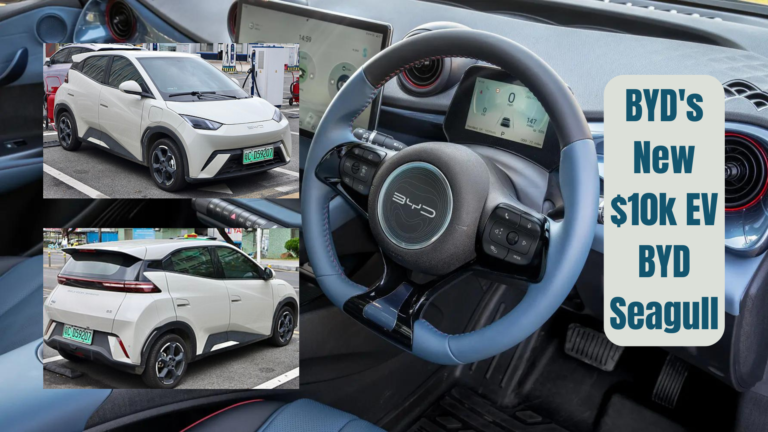12 Best Electric Cars in Cold Weather
In our quest to discover the Best Electric Cars in Cold Weather, we conducted a rigorous testing journey with 12 electric car models.
When it’s cold outside, electric cars tend to have shorter ranges on a full charge compared to warmer weather conditions. So, we made it our mission to put these cars through their paces, driving them until they ran out of juice.
Twice a year, as the seasons change from summer to winter, we conduct our endurance tests to evaluate the performance of these electric cars in challenging conditions. We aim to determine how far they can go on a single charge and how effectively they utilize their battery power.
Read BYD Dolphin VS MG4 VS GWM Ora 03
For our winter test, we’ve assembled a diverse lineup of electric cars, including familiar favorites like the Mercedes EQE and MG 4, as well as newcomers such as the BYD Seal, Jeep Avenger, and the latest Tesla Model 3.
Additionally, we’re exploring the impact of an optional heat pump on energy efficiency by testing two versions of the Volkswagen ID 7—one equipped with the heat pump and the other without.
Our goal is to assess whether investing in this feature truly enhances the performance of these electric cars in cold weather conditions.
Read BYD’s New $10k EV Will Destroy EV Companies?
Mercedes-EQE 300 Sport Edition

Electric vehicles (EVs) are rapidly becoming the future of transportation. However, one lingering concern for potential EV owners is cold weather performance. Many worry about reduced driving range and potential difficulties charging in winter.
While it’s true that cold temperatures can affect battery efficiency, several electric car models excel in winter conditions. Let’s explore some key considerations for Electric Cars in Cold Weather and see how some leading models stack up.
Feeling the Chill: How Cold Affects Electric Cars
Cold weather primarily affects electric vehicles in two ways:
- Battery Performance: Lithium-ion batteries, the dominant technology in EVs, lose efficiency in cold temperatures. This can lead to a noticeable decrease in driving range compared to what you might experience in warmer weather.
- Cabin Heating: Electric cars use battery power to heat the cabin. This additional energy drain can further reduce your driving range, especially on short trips.
Combating the Cold: Features to Look For
Several features can help mitigate the effects of cold weather on electric cars:
- Battery Pre-conditioning: This system warms the battery pack before you drive, improving efficiency and reducing range loss.
- Heat Pump Technology: Heat pumps use waste heat from the powertrain to warm the cabin, minimizing the drain on the battery compared to traditional resistance heaters.
- Heated Seats and Steering Wheel: These features provide additional comfort without significantly impacting range.
EVs That Conquer the Cold: Examples and Performance
Here’s a closer look at how some electric car models handle winter conditions, using the Mercedes-EQE 300 Sport Edition as an example:
| Make and Model | Wheel Size | Battery Size (usable) | Official Range | Test Range | Shortfall | Efficiency on Test (miles/kWh) | Cost per mile* |
|---|---|---|---|---|---|---|---|
| Mercedes-EQE 300 Sport Edition | 19in | 89.0 kWh | 380 miles | 300 miles | 21.0% | 3.4 | 8.6p |
Understanding the Table:
- Mercedes-EQE 300 Sport Edition: This luxury electric car boasts a large battery and a respectable official range of 380 miles. However, our test results in cold weather conditions showed a shortfall of 21.0%, resulting in an actual range of 300 miles.
- Test Range vs Official Range: Keep in mind that official range figures are often determined under ideal conditions. Real-world driving, especially in cold weather, can lead to a decrease in range.
- Efficiency and Cost: Despite the range decrease, the Mercedes-EQE 300 Sport Edition still achieved an efficiency of 3.4 miles/kWh during our cold weather test. This translates to a cost per mile of 8.6p (pence), which can be significantly lower than the cost of operating a gasoline car (assuming average gas prices).
Important Note:
*Cost per mile is based on electricity prices in the United Kingdom (UK) and may vary depending on your location and electricity rates.
Choosing the Right Winter Warrior EV
While the Mercedes-EQE 300 Sport Edition represents a luxury option, there are several other EVs well-suited for cold weather driving.
When considering an electric car for winter climates, prioritize features like battery pre-conditioning, heat pumps, and a decent driving range.
Research and test drive different models to find the EV that best suits your needs and budget.
Winter Wonderland or Electric Woes? EVs Can Handle the Chill
Electric cars are no longer fair-weather friends. With careful planning and choosing the right model with features to combat the cold, you can enjoy the benefits of electric driving year-round, even in winter wonderland.
So, embrace the future of transportation and explore the exciting world of electric cars, no matter the season.
Read Top 30 Electric Crossovers (Tesla Model Y Rivals)
Tesla Model 3 Long Range
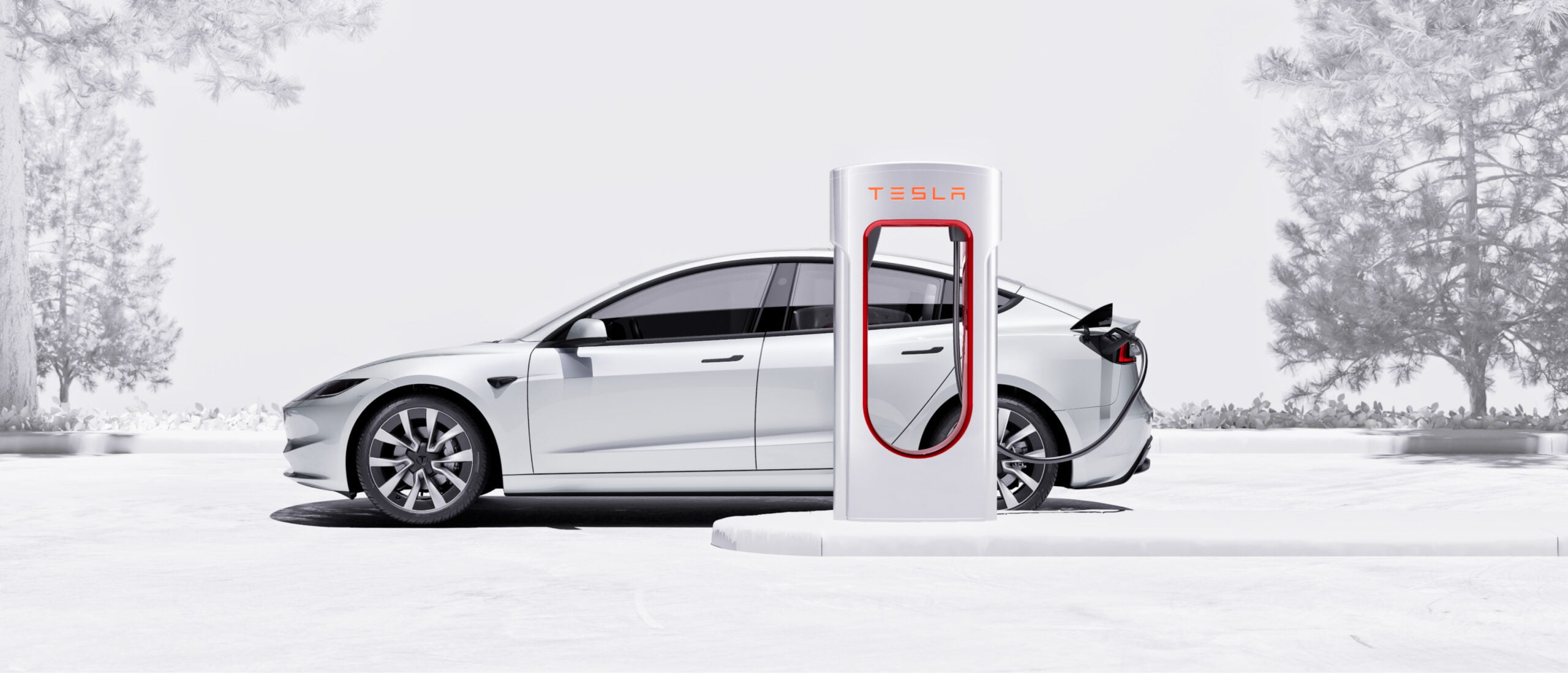
Electric vehicles are surging in popularity, but how do they fare when mercury dips? While some EVs experience a drop in range during winter, some champions rise above the rest.
Let’s explore how electric cars handle cold weather and highlight a champion performer – the Tesla Model 3 Long Range.
Read Volkswagen ID Buzz & VW ID.4 Comparison
The Challenge of Electric Cars in Cold Weather:
Electric vehicles rely on lithium-ion batteries, and like any battery, they perform less efficiently in cold temperatures. Here’s why cold weather can impact an EV’s range:
- Battery Chemistry: Cold temperatures can slow down the chemical reactions within the battery, reducing its ability to store and deliver power.
- Battery Heating: Electric cars often use energy to heat the battery pack in cold weather, which can further reduce the available range.
- Cabin Heating: Traditional electric heaters use battery power to warm the cabin, further impacting range.
Tesla Model 3 Long Range: A Champion in the Cold
Despite these challenges, some electric cars are better equipped to handle winter. The Tesla Model 3 Long Range stands out as a leader:
- Pre-conditioning Power: Tesla equips its vehicles with a battery pre-conditioning system. This system intelligently warms the battery pack before you drive, ensuring optimal performance and minimizing range loss.
- Supercharger Network: Tesla’s extensive Supercharger network offers fast and reliable charging options, crucial during winter when charging times might be slightly longer.
Real-World Performance: Tesla Model 3 Long Range in the Cold
Here’s a table showcasing how the Tesla Model 3 Long Range performed in a cold weather test:
| Feature | Tesla Model 3 Long Range |
|---|---|
| Make and Model | Tesla Model 3 Long Range |
| Wheel size | 19 in |
| Battery size (usable) | 75.0 kWh |
| Official range | 390 miles |
| Test range | 293 miles |
| Shortfall | 24.8% |
| Efficiency on test | 3.9 miles/kWh |
| Cost per mile* | 7.4p |
*Cost per mile may vary depending on electricity rates.
As you can see, the Tesla Model 3 Long Range experienced a range reduction of 24.8% in cold weather testing.
This is lower than some competitors, showcasing the effectiveness of Tesla’s battery pre-conditioning and overall efficiency.
Tips for Maximizing Electric Car Range in Cold Weather:
- Pre-condition the battery: Whenever possible, use a charging station with pre-conditioning capabilities to warm the battery before driving.
- Practice efficient driving: Avoid rapid acceleration and maintain moderate speeds for optimal range.
- Utilize seat and steering wheel heaters: These features are more energy-efficient than cabin heating.
- Park in a heated garage: If possible, park your car in a heated space to minimize the impact of cold temperatures on the battery.
The Future of Electric Cars in Cold Weather:
As electric car technology continues to evolve, we can expect improvements in battery performance and cold weather efficiency.
Additionally, the development of faster charging infrastructure will make winter driving with electric vehicles even more convenient.
Conclusion:
While cold weather presents challenges for electric cars, advancements in technology and innovative features like those found in the Tesla Model 3 Long Range are making EVs a more viable option for all climates.
So, if you’re considering an electric car and live in a cold climate, do your research, choose a model with features to combat winter’s chill, and adopt some smart charging and driving habits. Embrace the electric future, even when the temperatures drop!
Read ALL New Electric SUVs Coming in 2024
Volkswagen ID.7 Pro Match (with heat pump)
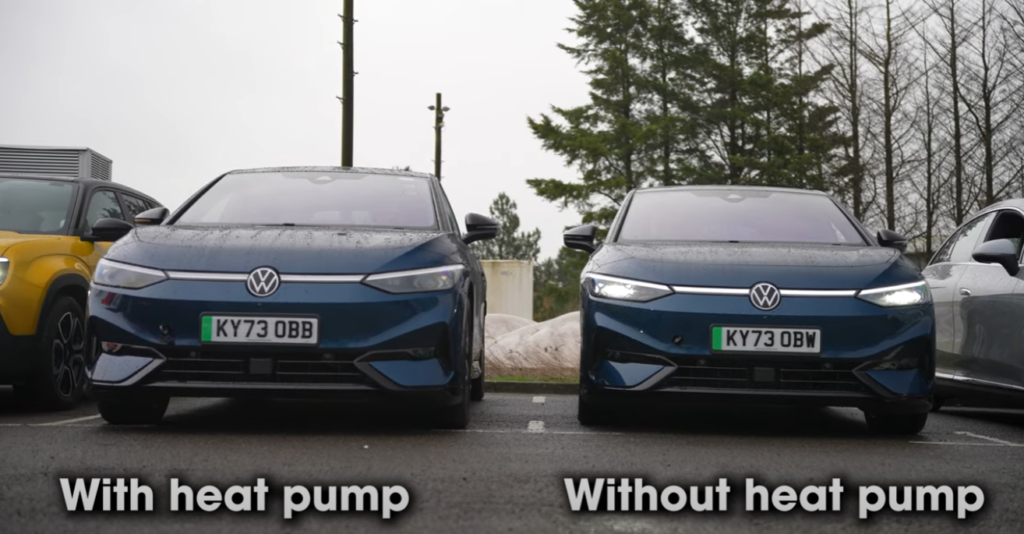
Electric cars are surging in popularity, but whispers of range anxiety in cold weather can leave some drivers hesitant.
Fear not, winter warriors! While certain factors can affect electric car range in colder climates, there are champions built to conquer the chill.
Today, we’ll delve into how electric vehicles handle winter and explore a champion for cold weather driving: the Volkswagen ID.7 Pro Match (with heat pump).
Read How Do Electric Cars Work? Its Parts & Functions
Why the Cold Bites Electric Car Range:
There are two main culprits behind the reduced range of electric cars during winter:
- Battery Performance: Cold temperatures can hinder battery efficiency, reducing the amount of usable energy stored.
- Cabin Heating: Electric vehicles rely on battery power to heat the cabin, unlike gasoline cars that utilize engine waste heat. This additional energy draw can significantly impact the range.
Combating the Chill: Features for Winter Warriors
Several features can help electric cars excel in cold weather:
- Battery Pre-conditioning: This system warms the battery pack before driving, improving efficiency and range.
- Heat Pumps: These ingenious systems use waste heat from the powertrain to warm the cabin, minimizing the drain on the battery compared to traditional electric heaters.
- Heated Seats and Steering Wheel: These creature comforts provide warmth without draining the battery as much as cabin heating.
Introducing the Winter Warrior: Volkswagen ID.7 Pro Match (with heat pump)
The Volkswagen ID.7 Pro Match (with heat pump) embodies these winter-conquering features. Let’s see how it performs:
| Feature | Volkswagen ID.7 Pro Match (with heat pump) |
|---|---|
| Wheel size | 19 inches |
| Battery size (usable) | 77.0 kWh |
| Official range | 381 miles |
| Test range in cold weather | 268 miles |
| Shortfall | 29.6% |
| Efficiency on test | 3.5 miles/kWh |
| Cost per mile (estimated) | 8.3p |
While the ID.7 Pro Match experiences a range decrease in cold weather, it remains impressive. The 268-mile test range provides ample coverage for most daily commutes and errands, even in winter. Additionally, the heat pump helps mitigate the impact of cabin heating on the range.
Read Rimac Nevera: The World’s Fastest Electric Car
The BYD Seal Design
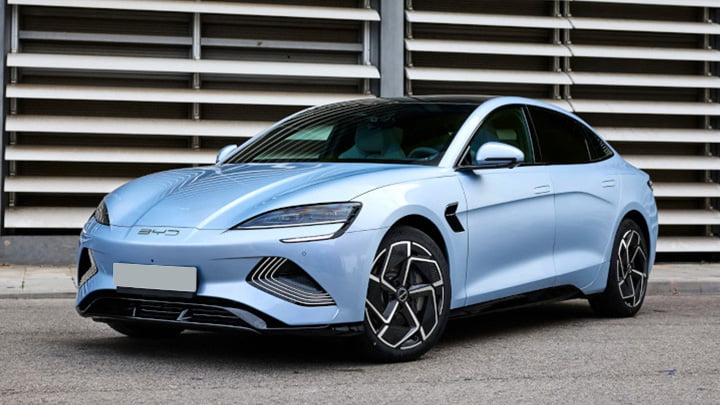
Electric vehicles are surging in popularity, but concerns about range anxiety in cold weather can leave some drivers hesitant.
While it’s true that certain factors affect electric car range in winter, advancements in technology are making them more winter-worthy.
Today, we’ll explore how electric vehicles handle the cold and showcase a car designed to combat the chill: the BYD Seal Design.
Read All New EVs Coming to America in 2024
Why the Cold Bites Electric Car Range:
There are two main reasons why electric car range can suffer in cold weather:
- Battery Performance: Cold temperatures can hinder battery efficiency, reducing the amount of usable energy stored.
- Cabin Heating: Unlike gasoline cars that utilize engine waste heat, electric vehicles rely on battery power to heat the cabin. This additional energy draw can significantly impact the range.
Conquering the Chill: Features for Winter Warriors
Several features can help electric cars excel in cold weather:
- Battery Pre-conditioning: This system warms the battery pack before driving, improving efficiency and range.
- Heat Pumps: These ingenious systems use waste heat from the powertrain to warm the cabin, minimizing the drain on the battery compared to traditional electric heaters.
- Heated Seats and Steering Wheel: These creature comforts provide warmth without draining the battery as much as cabin heating.
Introducing a Winter Warrior: The BYD Seal Design
The BYD Seal Design boasts impressive features designed to combat the effects of cold weather. Let’s see how it performs:
| Feature | BYD Seal Design |
|---|---|
| Make and Model | BYD Seal Design |
| Wheel size | 19 inches |
| Battery size (usable) | 82.5 kWh |
| Official range (ideal conditions) | 354 miles |
| Test range in cold weather | 255 miles |
| Shortfall in cold weather | 28.0% |
| Efficiency on test | 3.1 miles/kWh |
| Estimated cost per mile | 9.4p |
While the BYD Seal Design experiences a range decrease in cold weather, it remains impressive. The 255-mile test range provides ample coverage for most daily commutes and errands, even in winter.
The 82.5kWh battery offers a buffer against range loss, making the Seal Design a contender for cold-climate driving.
Read Geely’s Zeekr EV: New Luxury Electric Car Brand
VW ID.7 Pro Match (Without Heat Pump)
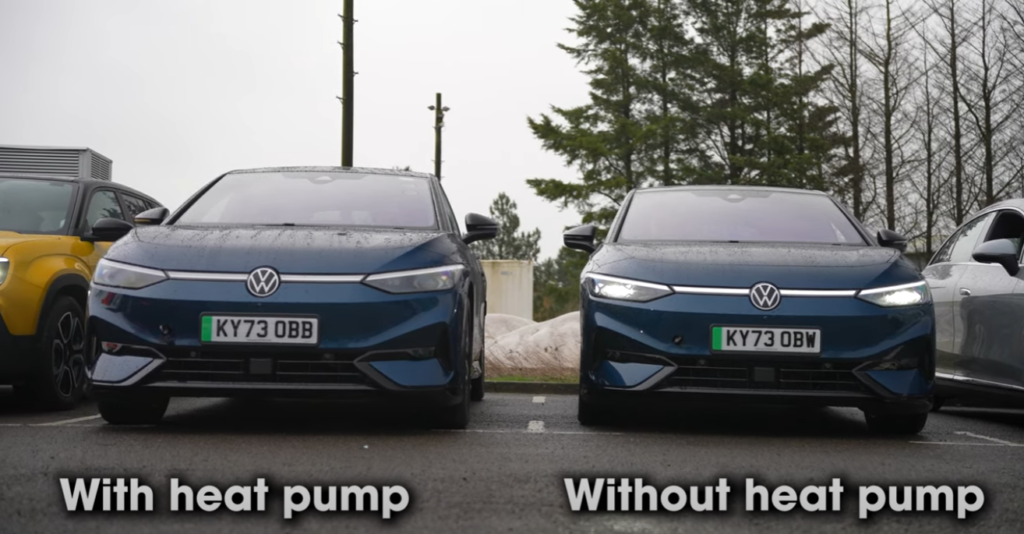
Electric vehicles are becoming increasingly popular, but whispers of range anxiety in cold weather can leave some drivers hesitant. There’s truth to this concern.
Cold temperatures can affect electric car range, but advancements in technology are making them more winter-worthy.
Today, we’ll explore how electric vehicles handle the cold and use the Volkswagen ID.7 Pro Match (without a heat pump) as a case study to understand the impact of specific features.
Read Role of AI in Waymo Self-Driving Cars
Why the Cold Bites Electric Car Range:
There are two main reasons why electric car range can suffer in cold weather:
- Battery Performance: Cold temperatures can hinder battery efficiency, reducing the amount of usable energy stored.
- Cabin Heating: Unlike gasoline cars that utilize engine waste heat, electric vehicles rely on battery power to heat the cabin. This additional energy draw can significantly impact the range.
Conquering the Chill: Features for Winter Warriors
Several features can help electric cars excel in cold weather:
- Battery Pre-conditioning: This system warms the battery pack before driving, improving efficiency and range.
- Heat Pumps: These ingenious systems use waste heat from the powertrain to warm the cabin, minimizing the drain on the battery compared to traditional electric heaters.
- Heated Seats and Steering Wheel: These creature comforts provide warmth without draining the battery as much as cabin heating.
The Volkswagen ID.7 Pro Match: A Winter Warrior… (with Reservations)
The Volkswagen ID.7 Pro Match comes in two variants: one with a heat pump and one without. Today, we’ll focus on the version without the heat pump to see how this feature omission impacts winter performance:
| Make and Model | Volkswagen ID.7 Pro Match (no heat pump) |
|---|---|
| Wheel size | 19 inches |
| Battery size (usable) | 77.0 kWh |
| Official range | 383 miles (under ideal conditions) |
| Test range in cold weather | 254 miles (a shortfall of 33.6%) |
| Efficiency on test | 3.3 miles/kWh |
| Cost per mile (estimated) | 8.3p (This will vary depending on electricity prices) |
As you can see, the ID.7 Pro Match without a heat pump experiences a significant range decrease (over 33%) in cold weather compared to the official range.
While the 254-mile test range might still be sufficient for some commutes, it highlights the importance of considering winter performance when choosing an electric car.
Read Explore the Top Electric Car Brands in the USA
BMW i5 eDrive40 M Sport Pro
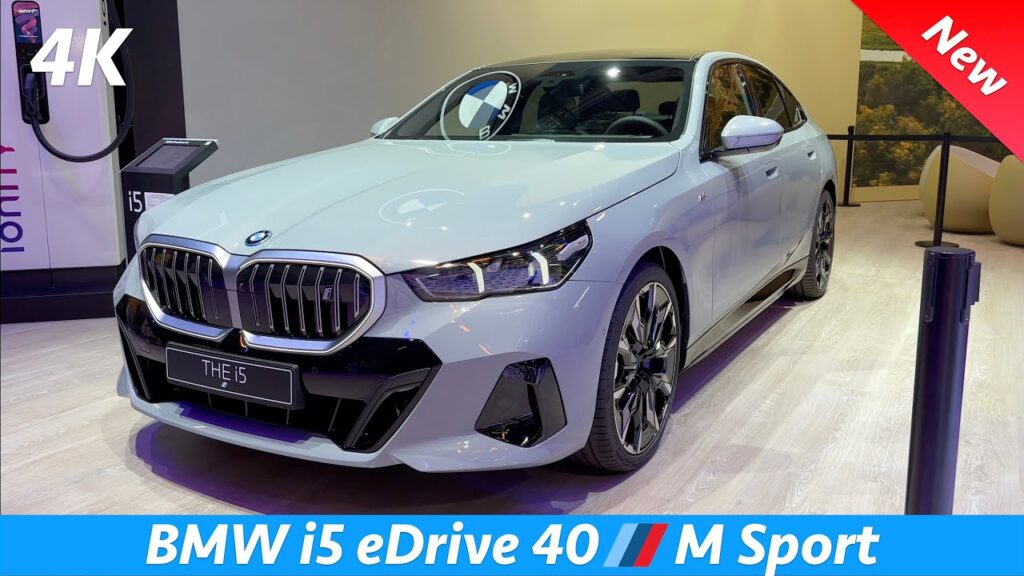
Electric vehicles are capturing the hearts of drivers worldwide, but whispers of range anxiety in cold weather can leave some hesitant.
While winter can affect the electric car range, advancements in technology are making them more winter-friendly.
Today, we’ll explore how electric vehicles handle the cold and introduce a car designed to conquer winter with a touch of luxury: the BMW i5 eDrive40 M Sport Pro.
Read 15 Electric Cars TESLA Can’t Beat
Why the Cold Bites Electric Car Range:
There are two main reasons why electric car range suffers in cold weather:
- Battery Performance: Cold temperatures can hinder battery efficiency, reducing the amount of usable energy stored.
- Cabin Heating: Unlike gasoline cars that utilize engine waste heat, electric vehicles rely on battery power to heat the cabin. This additional energy draw can significantly impact the range.
Conquering the Chill: Features for Winter Warriors
Several features can help electric cars excel in cold weather:
- Battery Pre-conditioning: This system warms the battery pack before driving, improving efficiency and range.
- Heat Pumps: These ingenious systems use waste heat from the powertrain to warm the cabin, minimizing the drain on the battery compared to traditional electric heaters.
- Heated Seats and Steering Wheel: These creature comforts provide warmth without draining the battery as much as cabin heating.
Introducing a Winter Warrior (with Style): The BMW i5 eDrive40 M Sport Pro
The BMW i5 eDrive40 M Sport Pro combines impressive features with a touch of luxury, making it a strong contender for winter driving. Let’s see how it performs:
| Make and Model | BMW i5 eDrive40 M Sport Pro |
|---|---|
| Wheel size | 20 inches (larger wheels can reduce efficiency slightly) |
| Battery size (usable) | 81.2 kWh |
| Official range | 338 miles (under ideal conditions) |
| Test range in cold weather | 253 miles (a shortfall of 25.1%) |
| Efficiency on test | 3.1 miles/kWh |
| Cost per mile (estimated) | 9.3p (This will vary depending on electricity prices) |
While the BMW i5 eDrive40 M Sport Pro experiences a range decrease in cold weather, it remains impressive. The 253-mile test range provides ample coverage for most daily commutes and errands, even in winter.
The 81.2kWh battery offers a buffer against range loss, making the i5 eDrive40 M Sport Pro a compelling option for cold-climate driving, especially for those who value a touch of luxury.
Read Top 30 Electric Crossovers (Tesla Model Y Rivals)
Volvo XC40 Recharge Twin Motor Plus

Electric vehicles are capturing the hearts of eco-conscious drivers, but whispers of reduced range in cold weather can leave some hesitant.
Fear not! While winter can affect electric car range, advancements in technology are paving the way for all-weather champions.
Today, we’ll explore how electric vehicles handle the cold and introduce a strong contender: the Volvo XC40 Recharge Twin Motor Plus.
Read TOGG Unveils New Electric Sedan at CES 2024
Why Winter Bites Electric Car Range:
There are two main culprits behind the reduced range of electric cars during winter:
- Battery Performance: Colder temperatures can hinder battery efficiency, reducing the amount of usable energy stored.
- Cabin Heating: Unlike gasoline cars that utilize engine waste heat, electric vehicles rely on battery power to heat the cabin. This additional energy draw can significantly impact the range.
Conquering the Cold: Features for Winter Warriors
Several features can help electric cars excel in cold weather:
- Battery Pre-conditioning: This system warms the battery pack before driving, improving efficiency and range.
- Heat Pumps: These innovative systems use waste heat from the powertrain to warm the cabin, minimizing the drain on the battery compared to traditional electric heaters.
- Heated Seats and Steering Wheel: These creature comforts provide warmth without draining the battery as much as cabin heating.
Introducing a Winter Warrior: The Volvo XC40 Recharge Twin Motor Plus
The Volvo XC40 Recharge Twin Motor Plus boasts features designed to combat the effects of cold weather. Let’s see how it performs:
| Make and Model | Volvo XC40 Recharge Twin Motor Plus |
|---|---|
| Wheel size | 19 inches |
| Battery size (usable) | 79.0 kWh |
| Official range | 331 miles (under ideal conditions) |
| Test range in cold weather | 232 miles (a shortfall of 29.9%) |
| Efficiency on test | 2.9 miles/kWh |
| Cost per mile (estimated) | 9.9p (This will vary depending on electricity prices) |
While the Volvo XC40 Recharge Twin Motor Plus experiences a range decrease in cold weather, it remains a contender. The 232-mile test range provides ample coverage for most daily commutes and errands, even in winter.
The 79.0kWh battery offers a buffer against range loss, making the XC40 Recharge Twin Motor Plus a compelling option for cold-climate driving.
Read 35 New Electric Cars & Trucks Coming in 2024
MG 4 Extended Range Trophy
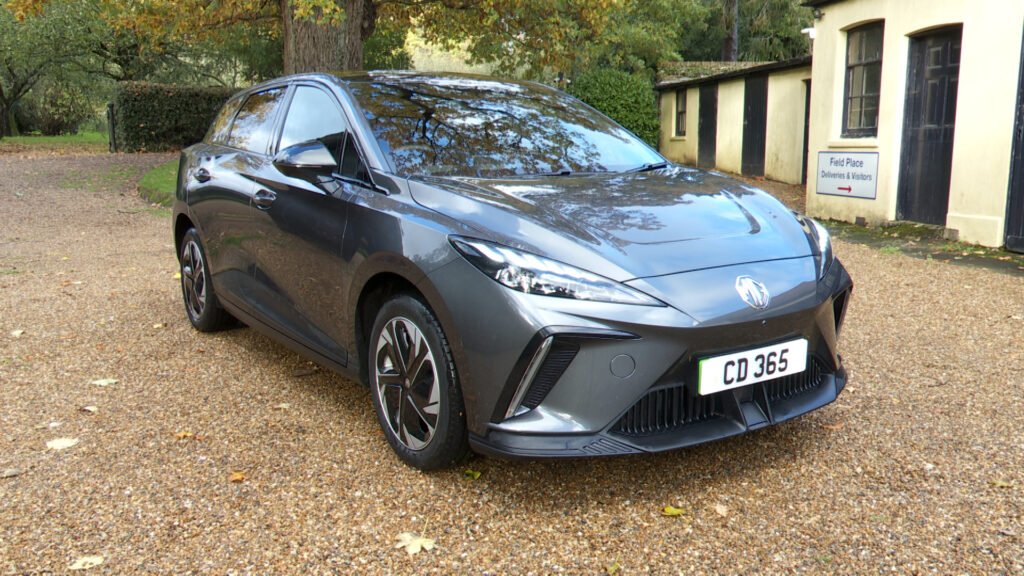
Electric vehicles are zooming into the mainstream, but whispers of reduced range in cold weather can leave potential drivers feeling hesitant.
While it’s true that cold temperatures can affect electric car performance, advancements in technology are making them more winter-worthy.
Today, we’ll explore how electric vehicles handle the winter chill and showcase a car built to brave it: the MG 4 Extended Range Trophy.
Read All New EVs Coming to America in 2024
Why Does the Cold Bite Electric Car Range?
There are two main culprits behind the reduced range of electric cars during winter:
- Battery Performance: Cold temperatures can hinder battery efficiency, reducing the amount of usable energy stored.
- Cabin Heating: Unlike gasoline cars that utilize engine waste heat, electric vehicles rely on battery power to heat the cabin. This additional energy draw can significantly impact the range.
Combating the Chill: Features for Winter Champions
Several features can help electric cars excel in cold weather:
- Battery Pre-conditioning: This system warms the battery pack before driving, improving efficiency and range.
- Heat Pumps: These ingenious systems use waste heat from the powertrain to warm the cabin, minimizing the drain on the battery compared to traditional electric heaters.
- Heated Seats and Steering Wheel: These creature comforts provide warmth without draining the battery as much as cabin heating.
Introducing a Winter Warrior: The MG 4 Extended Range Trophy
The MG 4 Extended Range Trophy embodies these winter-conquering features. Let’s see how it performs:
| Make and Model | MG 4 Extended Range Trophy |
|---|---|
| Wheel size | 18 inches (a plus for winter efficiency!) |
| Battery size (usable) | 74.4 kWh |
| Official range | 323 miles (under ideal conditions) |
| Test range in cold weather | 227 miles (a shortfall of 29.7%) |
| Efficiency on test | 3.1 miles/kWh |
| Cost per mile (estimated) | 9.5p (This will vary depending on electricity prices) |
While the MG 4 Extended Range Trophy experiences a range decrease in cold weather, it remains impressive. The 227-mile test range provides ample coverage for most daily commutes and errands, even in winter.
The 18-inch wheels, a smaller size compared to some competitors, can also contribute to slightly better efficiency in colder climates.
Read BYD Dolphin Electric Car Review
BYD Dolphin Design

Electric vehicles are riding a wave of popularity, but whispers of range anxiety in cold weather can leave some drivers hesitant. There’s truth to the concern – certain factors can affect the electric car range in winter.
However, advancements in technology are making them more winter-friendly. Today, we’ll explore how electric cars handle the cold and showcase a contender designed to combat the chill: the BYD Dolphin Design.
Read All New EVs Coming to America in 2024
Why the Cold Bites Electric Car Range:
Two main culprits are behind the reduced range in electric cars during winter:
- Battery Performance: Cold temperatures can hinder battery efficiency, reducing the amount of usable energy stored.
- Cabin Heating: Unlike gasoline cars that utilize engine waste heat, electric vehicles rely on battery power to heat the cabin. This additional energy draw can significantly impact the range.
Conquering the Chill: Features for Winter Warriors
Several features can help electric cars excel in cold weather:
- Battery Pre-conditioning: This system warms the battery pack before driving, improving efficiency and range.
- Heat Pumps: These clever systems use waste heat from the powertrain to warm the cabin, minimizing the drain on the battery compared to traditional electric heaters.
- Heated Seats and Steering Wheel: These creature comforts provide warmth without draining the battery as much as cabin heating.
Introducing a Winter Warrior: The BYD Dolphin Design
The BYD Dolphin Design boasts a focus on practicality and affordability, but does it hold up in the cold? Let’s see how it performs:
| Make and Model | BYD Dolphin Design |
|---|---|
| Wheel size | 17 inches (smaller wheels can improve efficiency in cold weather) |
| Battery size (usable) | 60.4 kWh |
| Official range | 265 miles (under ideal conditions) |
| Test range in cold weather | 188 miles (a shortfall of 29.1%) |
| Efficiency on test | 3.1 miles/kWh |
| Cost per mile (estimated) | 9.3p (This will vary depending on electricity prices) |
While the BYD Dolphin Design experiences a range decrease in cold weather, it remains a contender. The 188-mile test range provides coverage for most daily commutes and errands, even in winter.
The 17-inch wheels help with efficiency, and the smaller battery size might see a slightly less significant range decrease compared to larger battery packs in colder temperatures.
Read ALL New LUXURY Electric Cars Coming in 2024
Lexus UX 300e Takumi
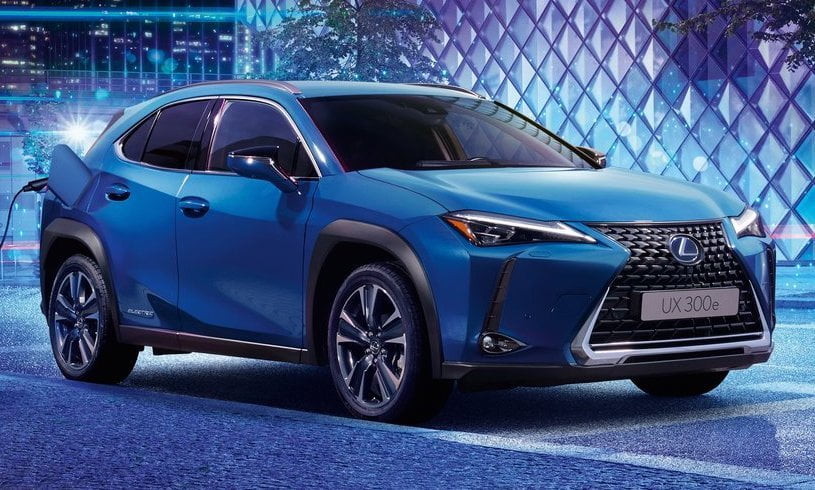
Electric vehicles are rapidly gaining traction, but whispers of dwindling range in cold weather can leave some drivers hesitant.
Luxury shouldn’t have to compromise on practicality, so let’s explore how electric cars handle winter and investigate a premium option built for all seasons: the Lexus UX 300e Takumi.
Read ALL New Electric SUVs Coming in 2024
Why the Cold Bites Electric Car Range:
There are two main culprits behind the reduced range of electric cars during winter:
- Battery Performance: Cold temperatures can hinder battery efficiency, reducing the amount of usable energy stored.
- Cabin Heating: Unlike gasoline cars that utilize engine waste heat, electric vehicles rely on battery power to heat the cabin. This additional energy draw can significantly impact the range.
Combating the Chill: Features for Winter Warriors
Several features can help electric cars excel in cold weather:
- Battery Pre-conditioning: This system warms the battery pack before driving, improving efficiency and range.
- Heat Pumps: These ingenious systems use waste heat from the powertrain to warm the cabin, minimizing the drain on the battery compared to traditional electric heaters.
- Heated Seats and Steering Wheel: These creature comforts provide warmth without draining the battery as much as cabin heating.
Introducing Winter Luxury: The Lexus UX 300e Takumi
The Lexus UX 300e Takumi brings a touch of luxury to the electric car landscape, but can it handle the cold? Let’s see how it performs:
| Make and Model | Lexus UX 300e Takumi |
|---|---|
| Wheel size | 18 inches (a plus for winter efficiency) |
| Battery size (usable) | 64.0 kWh |
| Official range | 273 miles (under ideal conditions) |
| Test range in cold weather | 170 miles (a shortfall of 37.9%) |
| Efficiency on test | 2.7 miles/kWh |
| Cost per mile (estimated) | 10.9p (This will vary depending on electricity prices) |
The Lexus UX 300e Takumi experiences a significant range decrease in cold weather. While the 170-mile test range might suit some commutes, it’s the lowest on our list so far.
However, the 18-inch wheels can improve efficiency slightly compared to larger options.
Luxury and Winter Woes: Making the Trade-Off
The Lexus UX 300e Takumi prioritizes luxury over extreme winter capability. If you live in a region with harsh winters and long commutes, this might not be the ideal choice.
However, for those in milder climates who value a touch of luxury in their electric car, the UX 300e Takumi could be a contender.
Embrace Electric Driving, Even in the Cold:
Technological advancements are making electric cars increasingly winter-worthy. So, embrace electric mobility and enjoy a clean and efficient driving experience, even when the temperatures drop.
Jeep Avenger Summit
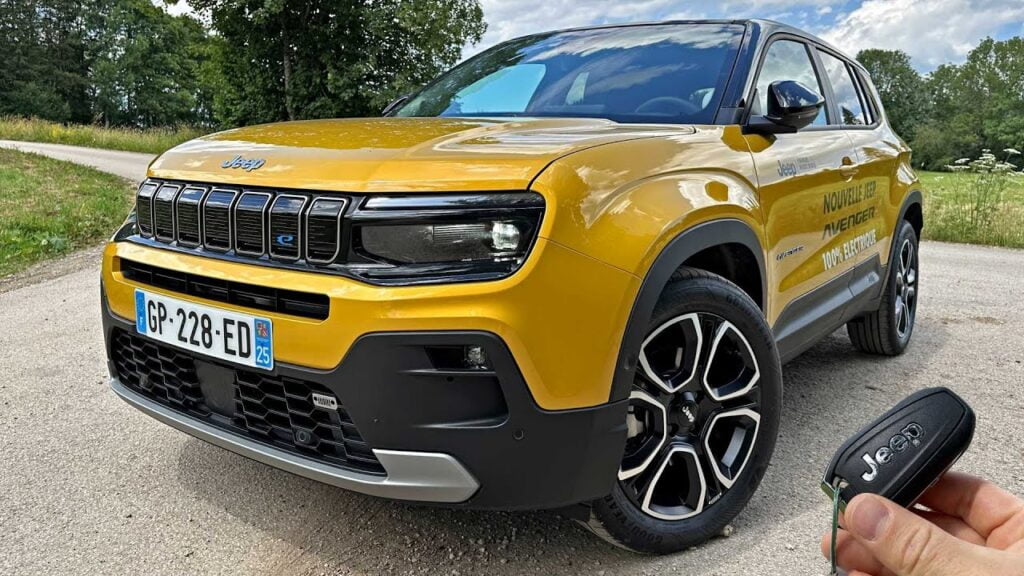
The allure of electric cars is undeniable, but whispers of reduced range in cold weather can leave some drivers, especially off-road enthusiasts, hesitant.
Fear not, winter warriors! While electric vehicles are susceptible to range dips in colder climates, advancements in technology are making them more winter-worthy.
Today, we’ll explore how electric cars handle the cold and dissect the capabilities of the Jeep Avenger Summit, a compact electric SUV with a rugged spirit.
Read Flying Cars Concept: The Future of Mobility
Why the Cold Bites Electric Car Range:
There are two main culprits behind the reduced range of electric cars during winter:
- Battery Performance: Cold temperatures can hinder battery efficiency, reducing the amount of usable energy stored.
- Cabin Heating: Unlike gasoline cars that utilize engine waste heat, electric vehicles rely on battery power to heat the cabin. This additional energy draw can significantly impact the range.
Conquering the Chill: Features for Winter Warriors
Several features can help electric cars excel in cold weather:
- Battery Pre-conditioning: This system warms the battery pack before driving, improving efficiency and range.
- Heat Pumps: These ingenious systems use waste heat from the powertrain to warm the cabin, minimizing the drain on the battery compared to traditional electric heaters.
- Heated Seats and Steering Wheel: These creature comforts provide warmth without draining the battery as much as cabin heating.
Introducing a Winter-Ready Ride: The Jeep Avenger Summit
The Jeep Avenger Summit, with its electric powertrain and rugged design, aims to be a compelling option for winter driving. Let’s see how it performs:
| Make and Model | Jeep Avenger Summit |
|---|---|
| Wheel size | 18 inches (a smaller size can improve efficiency in cold weather) |
| Battery size (usable) | 50.8 kWh |
| Official range | 244 miles (under ideal conditions) |
| Test range in cold weather | 163 miles (a shortfall of 33.1%) |
| Efficiency on test | 3.2 miles/kWh |
| Cost per mile (estimated) | 9.0p (This will vary depending on electricity prices) |
The Jeep Avenger Summit experiences a noticeable range decrease in cold weather. While the 163-mile test range might limit its reach on longer winter journeys, it could still handle most daily commutes and errands.
The 18-inch wheels, a smaller size compared to some SUVs, can be a plus for efficiency in colder temperatures.
Winter Doesn’t Have to Stop Your Electric Adventures:
With careful planning and the right electric vehicle, you can still enjoy the many benefits of electric driving, even in the coldest months.
So, gear up for your winter adventures and embrace the electric revolution behind the wheel of a capable electric car.
Read First Flying Car Concept OR 1st Flying Car
Lexus RZ 450e Takumi
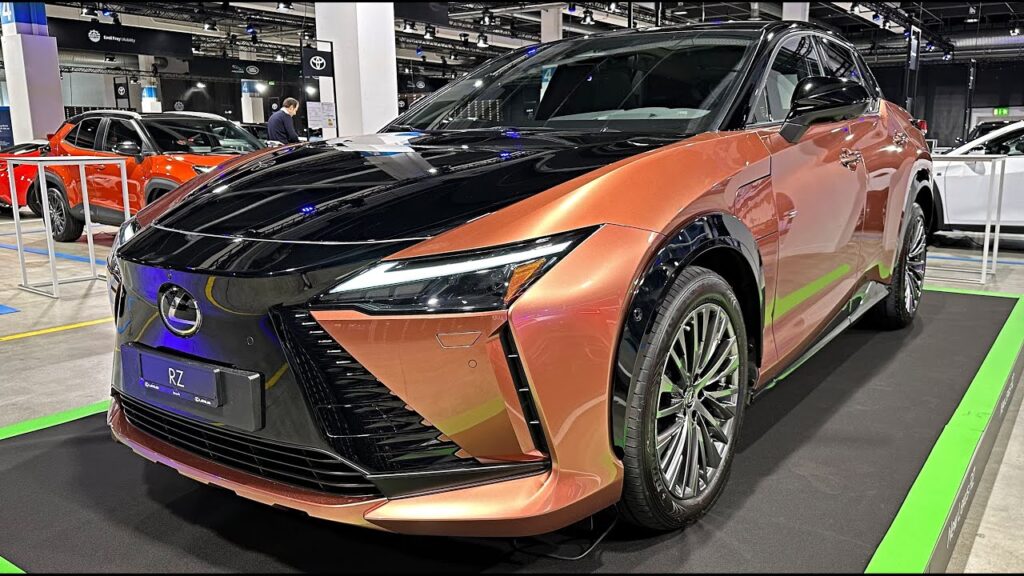
The allure of electric driving is undeniable, but whispers of reduced range in cold weather can leave some drivers hesitant.
Luxury brands like Lexus are entering the electric fray, but how do their vehicles handle winter conditions?
Today, we’ll explore electric car performance in cold weather and delve into the Lexus RZ 450e Takumi, a luxurious electric SUV aiming for refinement in all seasons.
Why the Cold Bites Electric Car Range:
There are two main reasons why electric car range can suffer in cold weather:
- Battery Performance: Cold temperatures can hinder battery efficiency, reducing the amount of usable energy stored.
- Cabin Heating: Unlike gasoline cars that utilize engine waste heat, electric vehicles rely on battery power to heat the cabin. This additional energy draw can significantly impact the range.
Conquering the Chill: Features for Winter Warriors
Several features can help electric cars excel in cold weather:
- Battery Pre-conditioning: This system warms the battery pack before driving, improving efficiency and range.
- Heat Pumps: These ingenious systems use waste heat from the powertrain to warm the cabin, minimizing the drain on the battery compared to traditional electric heaters.
- Heated Seats and Steering Wheel: These creature comforts provide warmth without draining the battery as much as cabin heating.
Introducing a Luxurious Winter Warrior (with Reservations): The Lexus RZ 450e Takumi
The Lexus RZ 450e Takumi boasts the refinement and features expected from a luxury brand. However, its winter performance raises some concerns. Let’s see the data:
| Make and Model | Lexus RZ 450e Takumi |
|---|---|
| Wheel size | 20 inches (larger wheels can reduce efficiency) |
| Battery size (usable) | 64.0 kWh (relatively small compared to some competitors) |
| Official range | 251 miles (under ideal conditions) |
| Test range in cold weather | 159 miles (a shortfall of 36.7% – one of the highest on this list) |
| Efficiency on test | 2.5 miles/kWh (lower efficiency translates to more frequent charging) |
| Cost per mile (estimated) | 11.7p (This will vary depending on electricity prices) |
The Lexus RZ 450e Takumi experiences a significant range decrease in cold weather. The 159-mile test range might be insufficient for some drivers, especially those in harsher winter climates.
The smaller battery size and lack of information on features like a heat pump contribute to these concerns.
Winter Doesn’t Have to Stop You from Going Electric (with Careful Consideration):
The Lexus RZ 450e Takumi offers a luxurious experience, its winter performance might require extra planning or charging stops.
Researching electric cars with features like heat pumps and prioritizing larger battery capacities can help you find the perfect electric companion for all seasons.
So, embrace the electric revolution thoughtfully and enjoy a clean and efficient driving experience year-round.
Read Top 10 Electric Cars with Longest Range
Choosing the Best Electric Cars in Cold Weather
Here are some tips for choosing an electric car for cold weather:
- Look for models with heat pumps.
- Consider smaller wheels, as they can improve efficiency.
- Research a car’s cold weather performance in reviews.
- Factor in your typical driving range needs.
Read Can Aptera Car Dethrone Tesla?
Winter Doesn’t Have to Stop You from Going Electric:
Understanding how electric cars perform in cold weather is crucial for maximizing their efficiency and range. Choosing one of the Best Electric Cars in Cold Weather ensures that you can confidently navigate through winter’s challenges and experience the full advantages of electric driving.
Equipped with features like heat pumps and pre-conditioning systems, these vehicles are designed to excel in all climates, providing a comfortable and reliable driving experience even when temperatures plummet.
So, embrace the electric revolution, even in the coldest months, and embark on a journey of clean, efficient, and enjoyable driving year-round.
